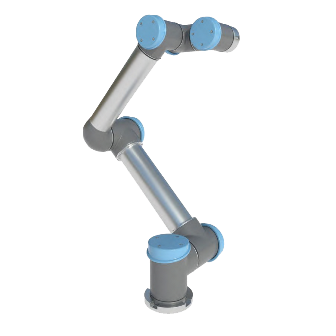In recent years the use of industrial robots in the electronics industry has nearly caught up to the automotive industry. More electronic device manufacturers are automating their operations in response to growing consumer demand, higher production costs, and labor shortages. The electronic device industry presents unique challenges to automating such as a high mix of products, crowded manufacturing floors, sensitive parts, and unpredictable volume spikes. These issues have made automating entire operations with traditional industrial robot arms difficult. This has led to the automation of electronic device manufacturing with cobots.
How Cobots Support Electronic Device Manufacturing
Collaborative robots are being used to automate the assembly processes involved with electronic device manufacturing. The FANUC CR-7ia is ideal for tasks like fastening covers on circuit boards. Other assembly tasks automated by cobots include retrieving parts, connecting parts, gluing, and screw driving. The small size and light payloads of cobots makes them ideal for handling the delicate and small components of electronic devices. Collaborative robots are best for taking over repetitive tasks from workers, allowing them to focus on more critical aspects of a production.Cobots are designed to work collaboratively with manufacturing equipment, human workers, and even other cobots. Their barrier-free operation along with various safety sensors makes them capable of interacting with people, other robot manipulators, or equipment without interference or safety issues. An entire production line of cobots can work simultaneously on different tasks to start and complete an entire product cycle. Once one cobot has finished a task, it can hand the part off to the next cobot for the following assembly process.
Many electronic components are sensitive to dust and electrostatic discharge. Exposure can compromise the components and the overall quality of the electronic device. Many cobots including the Universal UR10 are protected from emitting electrostatic discharge. This ensures parts do not become compromised during the handling and manufacturing of devices. Automating electronic device manufacturing allows for better control over the work environment with less human involvement.
With the compact footprint of collaborative robots they can be easily integrated in crowded factories, which can be common in the electronics industry. Cobots usually allow for multiple mounting options, providing installation flexibility. Their small size and light mass also allows them to be easily relocated, filling in where needed. The ease of integration of cobots gives manufacturers the flexibility to quickly adapt to unexpected labor shortages.
Cobots also support electronic device manufacturing with their quick changeover times. Electronic device manufacturing usually involves a high mix of products and high product turnover. Cobots can be programmed within a matter of minutes through hand guidance programming. Should a new product be introduced the KUKA lbr iiwa 14 R820 can quickly be retasked to automate the new assembly process. Cobots make the automation of high mix assemblies possible with quick changeovers.
Cobots also help electronic device manufacturers keep up with high consumer demand even when there are sudden unexpected spikes. Automating with cobots increases productivity as they can take over repetitive processes from workers. When demand increases they can scale up productivity rates without the need for additional workers or equipment. Manufacturers are able to adjust productivity as needed to meet demand for better customer satisfaction.
Robots Done Right is the place to start when it comes to used robots. Contact us if you are interested in buying or selling your used robot.
